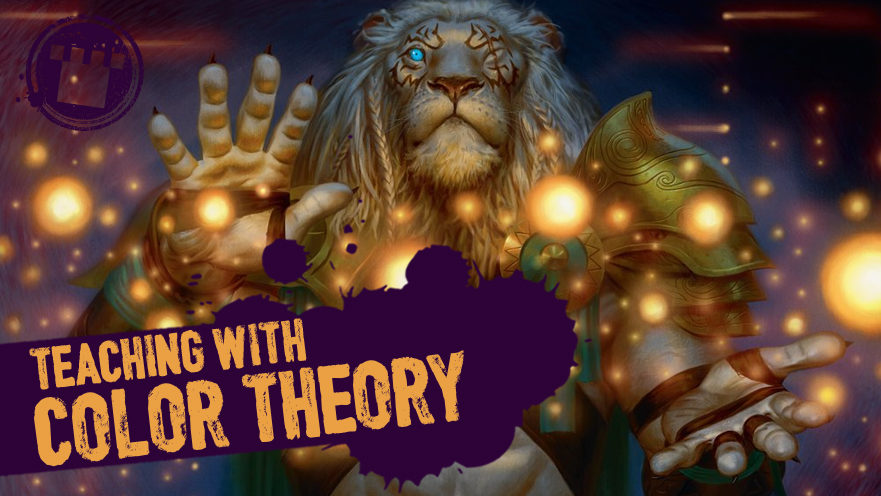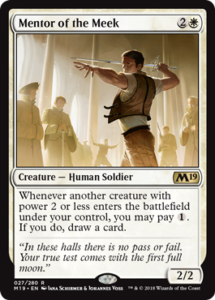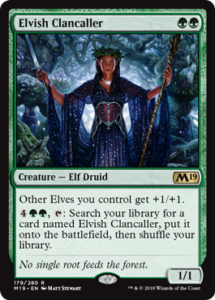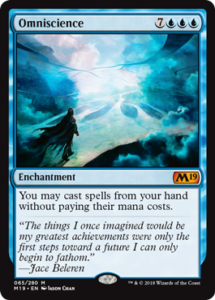The release of Core Set 2019 has been the cause of widespread celebration throughout the Magic community. Core Sets are a great time for Magic players, since they supplement other sets throughout the year and also help get back to the basics of the game. They’re also a great entry point for many players, since Core Sets rarely introduce new mechanics and usually focus on the defining strengths of each color. As someone who has taught many new players, I love using the color pie to introduce the game, treating it as the theory that a game of Magic can show in practice. The color pie is one of the game’s core strengths, and the deceptively simple way it captures complex ideas like greed, passion, learning and camaraderie tend to appeal to almost everyone.
Of course, using the color pie to give a new player perspective requires a deeper understanding of color theory, and how you explain it to your student depends on who they are. How can you help this person understand the pure yet unyielding perspective of White? Or the power and “survival-at-all-costs” instincts of Black? Here are a few key tips I’ve learned in my time teaching Magic that will hopefully help you inspire your neophytes to new aspirations.
Building Trust
One of the biggest mistakes I’ve seen any teacher make is not understanding (or bothering to understand) who their student is. Are they a young child, or an adult? What do they like to do in their spare time? What do they like to watch? If you spend a moment understanding who they are by making small talk and building trust, then you’ll know who your student is and how to frame the color pie and Magic. Creating that trust is key.
If you don’t trust someone, you won’t be inclined to accept anything from them, even if it’s free. Trust comes from a desire to create connection and is deeply rooted in empathy. If you can understand how your student feels and who they are as a person, you’ll be in a much better place to show them something new in a way they’ll accept and care about.
Color Theory
The tools I most often use to teach are Card Kingdom’s Rookie Decks or the Welcome Decks from Wizards of the Coast, and I try my best to have all colors represented when I teach. Laying them out in color order in a wheel (like the back of a Magic card), I pause before diving into how to play the game itself. Instead, I use this time to explain the ethos of each color, and how those philosophies end up playing out on the battlefield. I also take the time to explain how each color relates to the others – why some are enemies and others are allies.
I try to explain these colors as people or personalities that my students might know. For example, I taught several older women (mostly mothers) who had accompanied their husbands or children to GP Vegas last year and were just looking for something to do. After speaking with each of them and getting an idea of their personalities, I was able to explain each of the colors to them in a relatable way. For example, they were immediately able to associate White with Martha Stewart’s TV persona (poised, proper, sticking by the rules, most likely head of a PTA/church group), and Red with that one girlfriend who convinces you to drunkenly go to Cabo for a weekend, loses all of your money, and has no idea how to get back home.
By introducing each of these colors in a non-judgmental, relatable way, my students have a better understanding of how to pilot these decks when we eventually start playing the game. “Right, White wants to do things their way, and they’ve got an army to do it.” “Blue is a know-it-all, so they always want more knowledge, and more options.” In understanding the theory behind the game, my hope is that my students will have a broader understanding of how they want to win, and what they need to do to get there.
Putting Theory into Practice
Once my students understand the rudimentary pillars of color theory, we can progress to how the game is played. After all, if you understand someone’s motivations, then we can predict and explain how they act. For example, Walter White’s ego, selfishness and greed drove him to commit terrible crimes, while Danaerys Targaryen’s compassion and ambition compel her to fight for her chance to rule justly. If you know what your motivations are, you can build your strategy around it and analyze your (and your enemy’s) strengths and weaknesses effectively.
After going through the basics – like the phases of a turn, card parts, and priority – I begin to point out mechanics, keywords and other abilities that help underline the philosophies of each color. These are key in showing how Magic has taken these lofty ideals and realized them into game design. At this point, I let them choose a color and begin deconstructing the decks in order to get an idea of what the ratio of creatures to lands to spells are. From there, we go into the parts of a card, mana costs, and gameplay.
At every step, I try my best to tie back each aspect of the game (where applicable) to the color pie. Looking at the ratio of creatures to spells for example, is a place where relating back to the winning strategy of each color can be useful. Throughout all of this, I do my best to keep and maintain that trust between teacher and student, watching for any stumbles and answering questions as they arise.
Conclusion
There are many ways to teach Magic, but for many new players who seem overwhelmed by the complexities of a turn or what it means to turn cards over or sideways (or putting two cards together), starting with color theory can often be a relaxed and relatable way to begin their journey. I find that many folks tend to start immediately with gameplay, which can be off-putting to some. While this is definitely a slower way of teaching, I find that it tends to yield a good number of returning players, and if not, at least the students had a great time! Of course, this is the most Vorthos way of teaching a beginner, but hopefully this approach can help you recruit someone you’ve always wanted to play with.
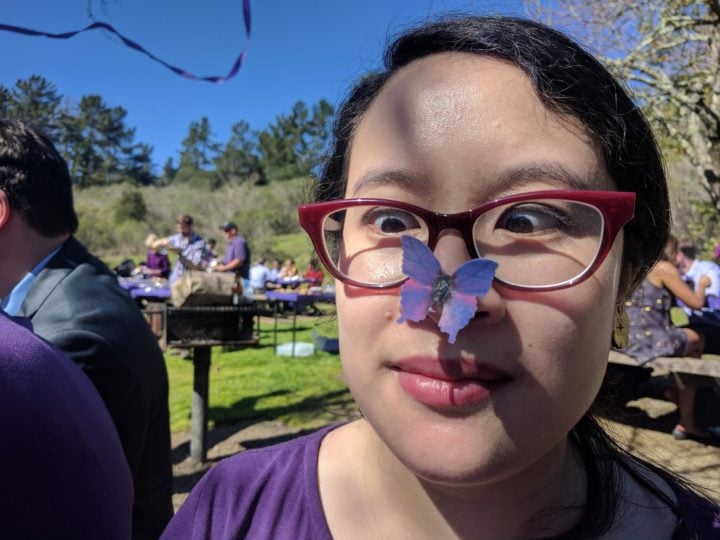
A consummate lover of books, tea, food and instant-speed kill spells, Michelle is a person of many passions. Her hobbies include cuddling cats, throwing pottery, and analyzing Magic lore from a literary perspective. She is also a co-host of the Vorthos comedy podcast, “The Loregoyfs,” and she comprises a full 25% of The Felidar Guardian (specifically the right hand, left ear and both scapulas). Her CMC is 2BWU, and her ETB trigger creates two 1/1 cats with lifelink and trample.

